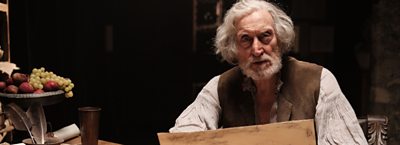Renaissance: The Blood and The Beauty explores the lives of three rival artists - Michelangelo, Leonardo and Raphael – who created seductively beautiful works of art during an age of violence and upheaval.
Featuring contributions from contemporary artists Antony Gormley, Alison Lapper, David LaChapelle, a host of experts and a star turn from Charles Dance as the older Michelangelo, this landmark three-part series, a co-commission between ����ý Arts and PBS, reveals how some of history’s greatest works of art, from Leonardo da Vinci’s Mona Lisa to Michelangelo’s David, emerged from an era of brutality and bloodshed.
All three artists were pushed to the heights of fame and artistic achievement by a combination of intense personal rivalry and bloody political upheaval. The greatest works of art in Western civilisation were forged in the crucible of northern Italy over a 50-year period at the end of the fifteenth century, by these three artists. Renaissance: The Blood and The Beauty examines how their achievements changed our understanding of art – and artists – forever.
Alistair Pegg, Commissioning Editor, ����ý Arts says: “We’re delighted to offer a new perspective on the Renaissance, as this series explores how some of the most famous achievements in Western art emerged out of a dark time of war and political turmoil.”
Alexander Leith, Executive Producer, ����ý Studios Specialist Factual, says: “The Renaissance is a pivotal moment in the history of art, and we’re thrilled to have been able to bring it to life in such an engaging way – and the tell the real story behind some of the Western world’s most familiar and celebrated artworks.”
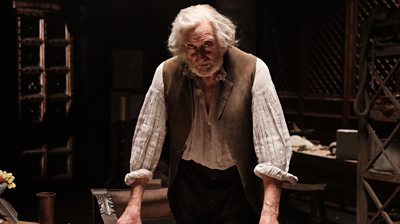
The series takes us from the bloody Pazzi Conspiracy of 1478 to the unveiling of Michelangelo’s Last Judgement in 1541, a sixty-year period which was defined by religious upheaval, power struggles and political treachery. Five hundred years ago, Italy was a patchwork of duchies and independent city states, with ruling families vying for supremacy and locked in near-constant power struggles, and threatened by bigger and more powerful neighbouring empires. This is a society in flux: the New World had been discovered in 1492; the supremacy of the Papacy and the Catholic Church is under threat from Martin Luther and the Protestant Reformation. And yet, it is exactly this febrile atmosphere – this singular set of circumstances – that allows these artists to rise and flourish.
The narrative and emotional heart of the series is Michelangelo Buonarroti, whose long life spanned this extraordinary period. The series is framed by Michelangelo’s later years, as he looks back on his life and career, with his words based on his own writings and inspired by contemporary accounts.
Playful and irreverent, Michelangelo’s story is interwoven with those of Leonardo and Raphael, as he tells the tale of how these three men vied for work and glory, and negotiated the changing whims of a variety of difficult, dangerous and powerful patrons – their artworks bringing them ever-greater favour – or placing them in peril.
Michelangelo, Leonardo and Raphael all work and succeed, only through the patronage of powerful ruling families. For these families, art is a means of projecting power and artists themselves a form of currency. The right image affects your standing in the world, just as it does today. Michelangelo’s fortunes rise and fall: he wins favour and riches and extraordinary commissions, before risking it all by defying his patrons and choosing sides. In the end, his art, his value as an artist - the name Michelangelo - saves his life and secures his legacy.
Artists Antony Gormley, Alison Lapper and David LaChapelle share their insights and perspectives on this extraordinary moment in time, alongside art historian and internationally recognised authority on Michelangelo, William Wallace, author and Professor of Renaissance History Jerry Brotton, art historian, lecturer and broadcaster Leslie Primo, Leonardo da Vinci biographer Walter Isaacson, historian and podcaster Kate Lister, novelist, journalist and broadcaster Sarah Dunant, historian and author Jessica Wärnberg, art historian, lecturer and editor Ilaria Bernocchi, writer, director and actor Daphne Di Cinto, art historian and author Bette Talvacchia, Papal historian and author Father Michael Collins, and art historian Maria Loh.
“We’re attracted to the idea that humanity can accomplish things of such beauty and grandeur, in a time of war, devastation and mayhem. We all have a debt I think to Michelangelo and the artists of the Renaissance, because they showed us what they can do beyond the complexities of the world and the mess of politics. They showed us what is possible.” – William Wallace
- Watch Renaissance: The Blood and The Beauty on ����ý iPlayer and ����ý Two from 2 December at 9pm
AM2
Meet the Contributors
Antony Gormley
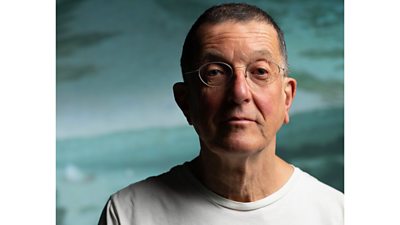
Antony Gormley is a celebrated British sculptor whose work explores the human form, space, and the relationship between body and environment. His work as an artist often centres around reimagining the human figure through innovative techniques and materials, often challenging traditional boundaries of sculpture.
Gormley's work frequently uses his own body as a reference point, creating sculptures that examine human presence within natural and constructed spaces. His most iconic works include Angel of the North, a 66-foot-tall steel structure erected near Gateshead, England, and Another Place, a series of cast-iron figures spread across the beach at Crosby in Liverpool. These pieces, alongside others, highlight the interactions between viewers, art, and environment, prompting reflections on personal and collective experiences of space.
Gormley has a deep interest in Art History, and a great admirer of Michelangelo’s work, particularly his obsession with the human body as a vehicle for emotions, thought, and ideas.
What is it about the art of Michelangelo that moves you?
It's impossible not to admire Michelangelo. He is in my view, the first modern artist. In other words, he manages to make - in a context of patronage - the work always his own.
He encountered difficulty, but he always found his own solutions. And while he criticised Leonardo for wasting his life on scientific research, I think there is a part of Michelangelo that was just as interested in, as it were, the science of, how you make something that is going to last; how do you make something that is going to cohere as an object.
How does his life and work speak to the modern world?
In the David, I think there's something amazing about the fall of the hands, and the fact that there is no action. I mean, in a way the David and Goliath story - think about Bernini - is all about action. And he's stood aside from that and said, no, I want to look at the condition of man as this, in a way, waiting, possibility. So that you could say why is David so connected to the Renaissance? Well, because he's thinking again about what it means to be human and human potentiality. He manages to make the body into a vehicle of infinite possibility.
David LaChapelle
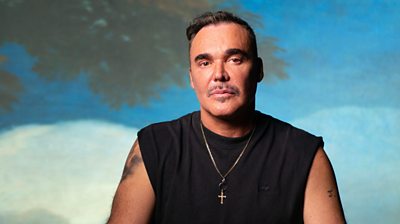
David LaChapelle is a renowned American photographer, artist, and director of music videos and films.
Celebrated for his vivid and surreal style, he began his career working with Andy Warhol in 1980s New York, and his work spans fine art, fashion, music videos, and advertising. Over the course of his prolific career, LaChapelle has captured iconic celebrity portraits of Paris Hilton, Lil Kim, Tupac, Britney Spears, Madonna, the Kardashians, and Naomi Campbell.
In addition to his photography, he has also exhibited his own fine art pieces over the last three decades in major galleries and institutions around the world. LaChapelle’s work often challenges social norms, tackling subjects like consumerism, celebrity culture, and spirituality with humour, hyper-realism, and vibrant colour schemes. He is heavily-influenced by ideas from Art History, particularly the artists of the Renaissance and Baroque eras.
He cites Michelangelo as his artistic hero, and a profound influence in his life and work, particularly his fascination with mortality, religion, and the human body.
Why does the Renaissance matter to you?
The Renaissance was the highest point of human artistry. It touches the sublime. It was a time when people came out of the Middle Ages and began to appreciate the beauty in the world, nature and in man. The fact that so many Italian masters were born around the same time is mind-boggling.
I’ve been attracted to classical art since I was a child. I read about Michelangelo as soon as I was able to read. This movement has had the most influence on me- the drama, the expression and the use of hands in these paintings and sculptures. The first pictures I made were of my friend in high school posing in the “dying slave” pose.
What is it about the art of Michelangelo, Leonardo and Raphael that moves you?
The use of hands and gesture brought paintings to life in the Renaissance. This sensitive attention to detail and body movement in these works has informed the way I work with subjects in my photographs.
How do theses artists’ lives speak to the modern world?
Renaissance art is pop art. Pop art actually comes from the Italian word Vox Populi, “voice of the people”. I am about to show a large-scale work by the same name. It is a collage of the many iconic faces of our time that I have captured over the last four decades. These modern pop icons are like our 16th-century symbols… Adam’s hand meeting God’s - the Mona Lisa, the statue of David - they are all ubiquitous pop icons recognized, reprinted and used all over the world.
Michelangelo’s David is still one of the most visited works of art 500 years after it was made. His paintings and sculptures have a kinetic energy that makes you stop and stare for long periods of time. There is a sense of optimism in his work, even in the sadness of his Pietà of St. Peter’s Basilica.
Alison Lapper
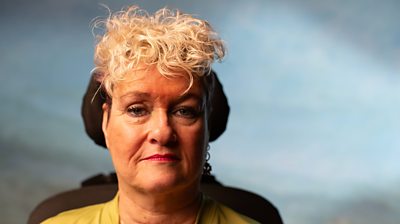
Alison Lapper is a British artist and disability rights advocate, known for her powerful works that challenge perceptions of beauty, disability, and the human body. Born in 1965 in Burton-on-Trent, England, Lapper was born with phocomelia, a rare condition that resulted in shortened legs and no arms. Despite facing societal prejudices, she grew up determined to live independently and pursue a career in art.
As an artist model, she is known for being the subject of Marc Quinn’s monumental marble sculpture, Alison Lapper Pregnant, which was displayed on Trafalgar Square’s Fourth Plinth from 2005 to 2007. Lapper's own art focuses on self-portraiture, often using photography, sculpture, and painting to explore themes of identity, body image, and mortality. Her works are recognized for their honesty and strength, pushing viewers to reconsider definitions of normalcy and beauty.
Why does the Renaissance matter to you?
The Renaissance was such a significant time of beauty, new techniques and creativity. It had a huge impact on art. I love the fact that the great artists explored the human anatomy and body form. They took inspiration from the Greek masters and works like the Venus de Milo, a piece of art that strongly resembles my own body form and really resonates with me.
What is it about the art of Michelangelo, Leonardo, and Raphael that moves you?
I love the sheer scale of their work, from the ceiling of the Sistine Chapel to the Mona Lisa to Raphael’s frescos. Each one has passion and emotion and remains a great masterpiece. They were creative geniuses and their work is still so important today across the globe.
How does Michelangelo’s life and work speak to the modern world?
Michelangelo had a deep understanding of the human body, in both anatomy and movement, which is still a touchstone for artists today. His work also has a rich emotional intensity which I believe came from his own life experiences and struggles, which survives the test of time and remains incredibly relevant.
Meet the Experts

William E. Wallace
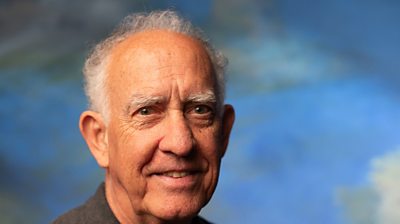
Professor William E. Wallace is a renowned art historian and leading authority on Michelangelo and Italian Renaissance art. Currently the Barbara Murphy Bryant Distinguished Professor of Art History at Washington University in St. Louis, Wallace has written or edited eight books and on Michelangelo’s life, works, and artistic processes during a career spanning four decades.
Wallace’s scholarship is notable for its in-depth analysis of Michelangelo's life, artistic process, and enduring legacy. His critically acclaimed works include Michelangelo: The Artist, the Man, and His Times and Michelangelo, God’s Architect, which delve into both the human and professional aspects of the artist.
Why does the Renaissance matter to you?
Because it was a time of war, turbulence and disruption that nonetheless contributed some of the greatest accomplishments of civilized humanity, and therefore still relevant to us today. How do we — in a disruptive time — leave something to the future that will continue to matter for 500 years.
What is it about the art of Michelangelo that moves you?
A man living twice as long (89 years) as the average (40-45 years), losing his entire family and most of his close friends, yet never giving up, never slowing down, and accomplishing astonishing, wondrous things over the course of a 75 year career which, in his 70s and 80s, culminated in his greatest accomplishment and masterpiece— without ever seeing it completed: new St. Peter's.
How does his life and work speak to the modern world?
If you are thinking of retiring at 70 or earlier consider that Michelangelo — who certainly was ready to retire — was appointed architect of the largest building in the world: new St. Peter's. In his 70s and 80s he was busier than ever in his life completing the tomb of Pope Julius II, painting the Last Judgment and two large frescoes in the Pauline Chapel, carving two Pietas to mark his own grave, and acting as papal supervising architect over 6 gigantic construction sites in Rome including the Campidoglio, Farnese Palace, Porta Pia, Sta. Maria degli Angeli, Sforza Chapel and, of course, new St. Peter's. If you are 70 your life and best accomplishments are still ahead of you. That is Michelangelo speaking to us.
Jerry Brotton
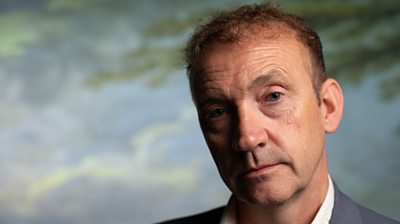
Jerry Brotton is Professor of Renaissance Studies at Queen Mary University of London. He is the author of numerous books on Renaissance history, with a particular focus on the politics, trade, and the exchange of ideas from Eastern and Western cultures that influenced art and society. His bestselling book A History of the World in Twelve Maps (2012) received widespread media and review coverage and was translated into eleven languages.
Brotton is a regular broadcaster, critic and feature writer, presenting several series on ����ý for TV and radio, co-curating exhibitions, and is an associate of the People’s Palace Projects, where he works on a variety of projects in Brazil on subjects Shakespeare, utopia and indigenous communities.
Why does the Renaissance matter to you?
It matters because it's also a period that historians call 'the early modern', when we witness the beginnings of modern identity, capitalism, politics, science, art and other features we now take for granted; but the 15th-16th centuries are when these issues first start to appear recognisably modern. It's therefore a crucial period to see ourselves emerge, and at its centre is art. Every culture is measured by its artistic creativity, and none more than the Italian Renaissance. It's also the beginning of humanism, a movement that starts to put people at the heart of culture and society, rather than gods or superstitious beliefs.
What is it about the art of Michelangelo, Leonardo, and Raphael that moves you?
Their art develops a history of emotion. We see them creating psychological realism: people in pain, ecstasy, despair, joy, a whole range of emotions. We can identify with such art in a way it's hard to do with what is made, say, 150 years earlier. The art moves us because it itself is moving--and that's deliberate on the part of the artists. They are competing to create the most extreme emotions in their audience, and like modern art, that shocks us: but we also enjoy being shocked by art.
How do these artists’ lives and work speak to the modern world?
As we see the art of this period as being on the cusp of our modern lives; different, but also identifiable to us. It also enables us to think that identities – like for example sexualities – are not fixed but change over long time periods. Finally, the art takes many of the techniques used – sculpture, fresco painting, drawing – to a level never seen before or since.
Leslie Primo
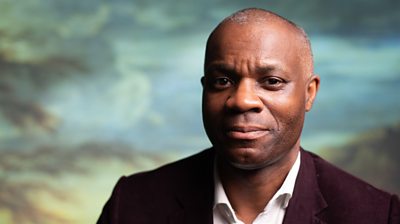
Leslie Primo is a British art historian, lecturer, and author.
After a difficult youth, leaving school with no qualifications, Leslie was inspired to become an art historian by looking at Renaissance paintings in the National Gallery, where he went on to work for nearly twenty years while studying for his MA, working his way up from the gift shop to a senior lecturer and specialist in Renaissance and Medieval art.
Leslie now teaches at several universities and academic institutions in London, has appeared in a number of documentaries on radio and television, and has authored and contributed to several books on British and Renaissance art and history, and on black representation.
He is particularly inspired by the universal emotions and stories that art portrays, and are best found in the art of the Italian Renaissance, which was a transformative period in Western culture.
Why does the Renaissance matter to you?
There is a reality to the Renaissance that is hard to deny: it is a celebration of the arts through power, passion, nepotism and corruption. But the Renaissance also matters to me because it's all around me. I see it in contemporary art, in architecture, I see in the way we are always reinventing the past, its legacy is in the very fabric of our society, and that is why the Renaissance matters to me.
What is it about the art of Michelangelo, Leonardo, and Raphael that moves you?
There is an obsessiveness about creativity that speaks to me about my own obsessive tendency towards varied interests and of course art history. So, in turn I am moved by the utter dedication of these artists to their craft, but also the humanity, love and empathy in their art: The colour, line and sheer exuberance of their work above all else speaks to me about what it is to be in the moment, alive and seeing life in vivid colour and clarity.
How do these artists’ lives and work speak to the modern world?
There is a much-quoted anecdote that there are only seven stories in the world. The lives of these artists are not only a celebration of the power in creativity, but also a celebration of our common humanity retold repeatedly in those stories. I believe the people depicted in their art are not from a bygone age, because we, like them, still have those same feelings of loss, joy, anger, love and jealousy, and that is what's reflected back to a modern audience.
Walter Isaacson
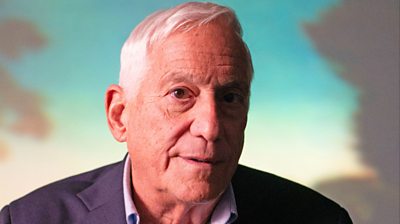
Walter Isaacson is an acclaimed American author, journalist, historian, and professor, renowned for his biographies of influential figures who have shaped science, technology, and culture.
He began his career in journalism, eventually becoming editor of Time magazine and later serving as the CEO of CNN. His transition to biographical writing brought him widespread acclaim, beginning with Kissinger: A Biography and continuing with bestsellers like Steve Jobs, Einstein: His Life and Universe, Leonardo da Vinci, and most recently an authorised biography of Elon Musk.
His biography of Leonardo da Vinci paid particularly close attention to the artist’s notebooks, looking at how his endlessly curious mind, his experiments, and his observations of the natural world were the key drivers behind his art, and that no other figure in history was as creative in so many different fields.
Why does the Renaissance matter to you?
The Renaissance ideal was to know as much as was possible about everything that was possibly knowable. That endeavour led to a connection between art and science and the humanities that allowed us to see new patterns across nature.
What is it about the art of Leonardo that moves you?
Leonardo exemplified this ideal. He helped pave the way for the Scientific Revolution and led us into a new era of artistic perspective.
How does his life and work speak to the modern world?
I am inspired by Leonardo every day to try to be curious about the ordinary beauty and natural phenomena around me. I push myself to stop and observe deeply the wonders of our existence
Kate Lister

Dr Kate Lister is a historian of sexuality and gender, columnist, and television presenter. She is the author of A Curious History of Sex and the host of podcast, Betwixt the Sheets: The History of Sex, Scandal, and Society. She curates the online research project, Whores of Yore, an interdisciplinary digital archive for the study of historical sexuality.
Her work on sexuality in the Italian Renaissance has focused on the contradictions in Renaissance Florence’s attitude towards homosexuality, representations of women and female beauty, and the lives and treatment of sex workers in 15th and 16th centuries.
Why does the Renaissance matter to you?
As a historian of sexuality, the Renaissance is hugely significant. As the world emerged from the horrors of the Black Death, people began questioning everything, from God himself, to the nature of art, and true function of society. The Renaissance's embrace of humanism and individual experience created a fertile ground for exploring themes of sexuality, which were often interwoven with art, philosophy, and societal norms.
What is it about the art of Michelangelo, Leonardo, and Raphael that moves you?
I am always moved by the erotic tension in the work of Michelangelo, Leonardo da Vinci, and Raphael. Not only do they showcases their technical mastery but their art also reflects the nuanced sexual dynamics of the time. I love Leonardo's depictions of male figures and how they often carry homoerotic undertones His portrayal of John the Baptist was modelled after his lover Gian Giacomo Caprotti (Salì), and exemplifies an intimate connection between art and sex.
It’s hard not to look at any work Michelangelo did and not see how much he loved the boys. Everything he does seems to exude a deep love of the male form. I am always moved by the fact his masterpiece on the ceiling of the Vatican is really a queer extravaganza.
Raphael’s passion and engagement with the beauty of his subjects moves me. He blends intellect with creativity and a lust for life.
How do these artists’ lives and work speak to the modern world?
In many ways, these artists forged the modern world. Their emphasis on physical, as well as spiritual beauty is still very much with us today. But, the works of Michelangelo, Leonardo, and Raphael are not just beautiful, they’re also a reminder that the human experience is complex, filled with beauty, pain, humour, and desire.
Sarah Dunant
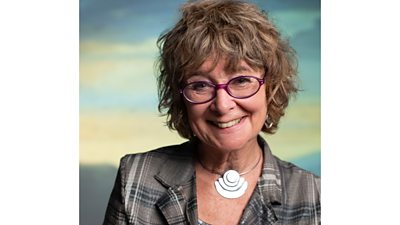
Sarah Dunant is a prominent British author and broadcaster, renowned for her historical novels and insightful explorations of women’s lives across different eras.
Dunant began her career in journalism and television, working for notable outlets such as the ����ý, before turning her attention to fiction. Her literary works often blend meticulous historical research with rich, character-driven narratives. Dunant’s most acclaimed novels include The Birth of Venus, In the Company of the Courtesan, and Blood & Beauty, each set against the backdrop of Renaissance Italy.
She was inspired to write historical fiction set in the Italian Renaissance while walking the streets of Florence, and thinking to herself: “What the hell happened here 550 years ago to make this small, parochial city the cauldron for one of the greatest cultural revolutions that Europe has ever seen?”
Why does the Renaissance matter to you?
To spend any time in the Renaissance is to discover a moment in history where, despite wars and the usual horrors of human behaviour, a substantial number of influential people had the curiosity and energy to push forward the boundaries of knowledge. Not only through new technology and investigations into nature and science, but also with the humility to accept that they might also have something to learn from the past, in their case cultures that existed thousands of years before them.
This humility allowed them to access and forge not only a new kind of art, but new ways of thinking. While God still ran the show, humanity could now stand up a little taller next to Him. And while there were still power structures and individuals who controlled vast – and unequal – amounts of wealth, they used it not to buy the equivalent of super yachts, but to prioritise beauty and emotional depth, to support artists, architects, scholars and thinkers who together revolutionised not just the way we see the world but also how we think about it.
If only we could say the same thing about our moment of history now.
What is it about the art of Michelangelo, Leonardo, and Raphael that moves you? How do they speak to the modern world?
In short, while all of them were steeped in the accepted religious mores of the time (i.e. the Catholic faith,) they each found ways to dig beneath it to a different level of humanity.
After Michelangelo, our understanding of and appreciation of the human body will never be the same again. Through his anatomical research, he pushed the boundaries of medicine and science. And in his continual restless search for spirituality within the physical he gave man (and to a lesser extent women) dignity, power and poignancy. He is humanism sculptured in stone.
For Leonardo, the intense curiosity was directed towards the wonders of nature. He is as much the scientist as he is the artist, a man who could never stop asking questions, probing, redefining the world around him. Within his notebooks (which interestingly, of course, were never made public during his own life) we can now see a whole future yet to come, unfolding.
And Raphael? Well, Raphael drank deep from both of them. In his painfully short span of life ( 37 years) he mastered both the epic and the intimate. And in his evocation of the female, both spiritual and physical, his brush was dipped in grace. As a woman, while I may be in awe of the intensity of Michelangelo or the brilliance of Leonardo, it is to Raphael I go to find intimacy, most especially of the mother’s relationship to a child. And how for many women then, the experience of motherhood would have been a constant reality.
Jessica Wärnberg
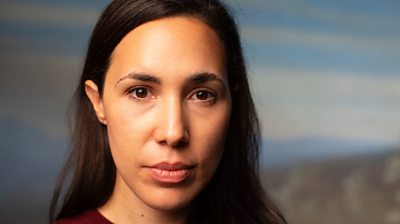
Jessica Wärnberg is a historian, author, Fellow of the Royal Historical Society, and consultant, specialising in Rome and Papal history.
She has published groundbreaking work on how religion and politics have clashed and intertwined to shape our world. Her second book ‘City of Echoes’ is the first ever account of how the presence of the popes has shaped Rome and its history, from the time of Saint Peter to our own day.
Much of her writing is informed by deep research into primary sources and archives, and creating compelling stories and characters out of her extensive research.
Why does the Renaissance matter to you?
The history of the Renaissance is the history of the triumph of the human spirit. In Italy, this was a period blighted by discord, corruption and bloodshed. And yet, through the vision, determination and wild ambition of artists and patrons, it was a period that gave us some of the most edifying products of human hands.
What is it about the art of Michelangelo, Leonardo, and Raphael that moves you?
The work of these artists reflects their deeply personal experience. These were men who wrestled with their own limitations and the challenges of their day to realise a radically new artistic vision. Yet at the same time, their art conveys messages that are universal and compelling to this day: on human nature, the material world and what lies beyond both.
How do these artists’ lives and work speak to the modern world?
Modern media often encourages us to present our lives as a polished reel of continuous highlights. But these Renaissance men were far from perfect (even if Raphael, by some accounts, came closer than most). They fought. They doubted. Sometimes, they failed. In the end, their artistic legacy is the result not only of their genius but their grit. Their lives and work show us that we must not be afraid to face our limitations, especially if we wish to overcome them.
Ilaria Bernocchi
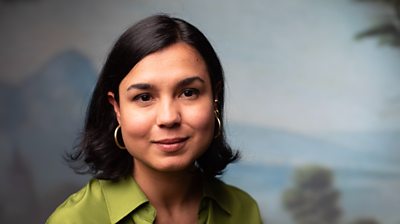
Dr Ilaria Bernocchi is an editor of art history publications and former lecturer in Renaissance and Baroque art. She has published on the grotesque, the relationship between poetry and portraiture, and translated Italian and Latin works into English.
Her particular interest and specialism lies in the portraiture of the Italian Renaissance; looking at how images are curated to project status, power, cultural values, and ideas.
Why does the Renaissance matter to you?
It is a period of experimentation, humanism, artistic progress, yet still imbued with the complex and fascinating ideas produced during the Middle Ages. It is a period of transition, when received wisdom is questioned and rediscussed, but also of renewed interest in the classical world. As an Italian, it is also a fundamental part of my heritage.
What is it about the art of Michelangelo, Leonardo, and Raphael that moves you?
I am moved by the intensity of their attempt to understand and convey the harmony of the natural world — which at the time would have meant also the harmony of divine creation — and by their profoundly human struggle with this ambition.
How do these artists’ lives and work speak to the modern world?
Their energy and curiosity for the world around them and the world inside them transcend their time. The questions they explored through their art are universal.
Daphne Di Cinto
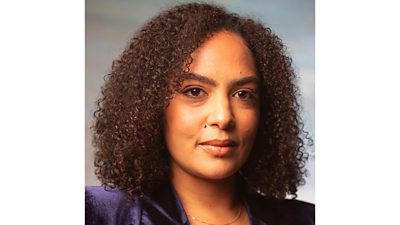
Daphne Di Cinto is a Black Italian screenwriter, director, actor, and producer who has studied and worked in Rome, Paris, New York, and London. As well as acting in Bridgerton, she is the screenwriter and director of Il Moro, an award-winning film about Alessandro de’ Medici, the first Black Italian Duke of Florence.
Her work as a filmmaker on historical fiction narratives, as well as her growing up in Florence, has led to her to extensively study the history of Florence and the Medici, whose presence and influence over Italian culture is still strongly felt today.
Bette Talvacchia
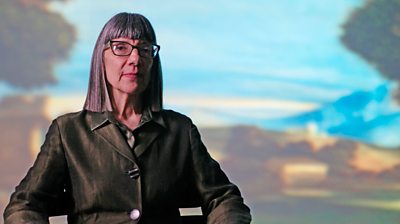
Bette Talvacchia is an American art historian and educator. Talvacchia is the Board of Trustees Distinguished Professor of Art History Emeritus at the University of Connecticut. Her work as a scholar focuses on the art and culture of the Italian Renaissance, and on issues of sexuality and gender, as well as writing books on Raphael and Michelangelo.
Father Michael Collins
Father Michael Collins is a Priest and Papal Historian living in Dublin. Formerly a Papal Advisor, he was also a Vatican tour guide, and has authored several books on the history of Rome, the Papacy, and religious figures, as well as on the painter Raphael, and on Pope Francis.
Maria Loh
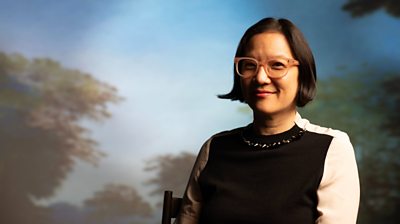
Maria Loh is internationally distinguished expert in the field of early modern Italian art and theory, who currently works at the prestigious Institute for Advanced Studies. Her specialisms are in Venetian Renaissance art and old master portrait painting.
Credits
A ����ý Studios Specialist Factual production for ����ý Arts and PBS, Renaissance: The Blood and The Beauty is distributed internationally ����ý Studios.
- Executive Producer: Alexander Leith
- Series Director: Emma Frank
- Producer/Directors: Richard Pearson & Eddie Knox
- Production Manager: Emma Hyland
- Commissioning Editor for ����ý Arts: Suzy Klein and Alistair Pegg
- Commissioning Executive for PBS: Zara Frankel
